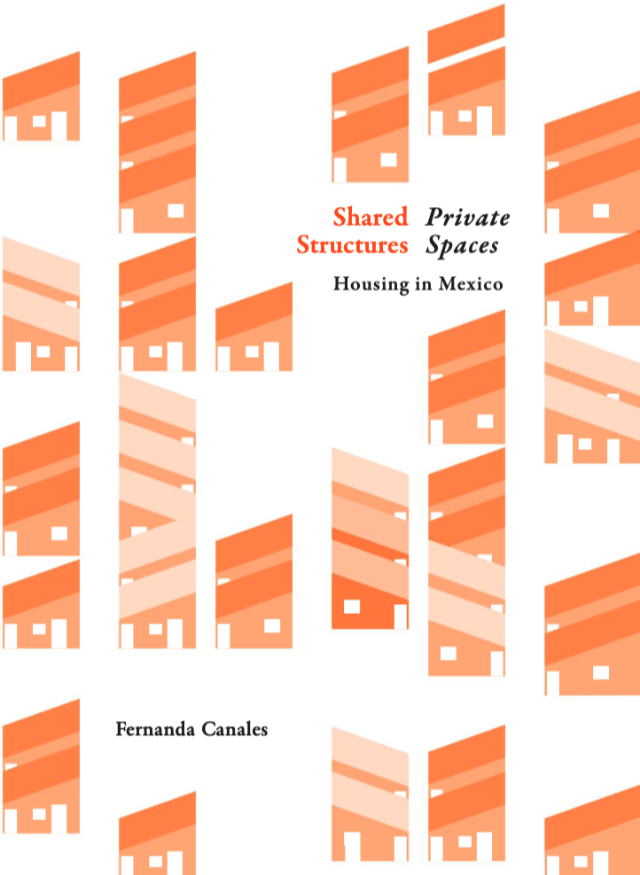Shared Structures, Private Spaces
Shared Structures, Private Spaces: Housing in MexicoFernanda CanalesActar Publishers, December 2020Paperback | 6-3/4 x 9-1/2 inches | 280 pages | English | ISBN: 978-1945150883 | $46.00PUBLISHER'S DESCRIPTION: The geographic, social, and economic diversity of Mexico constitute a prime example of the challenges inherent to meeting individual needs in an increasingly crowded world. The drawings and essays comprise new ways of looking at theories and buildings in order to redefine the connection between housing and the city. This research is centered in drawings of 70 housing projects, creating a common language highlighting different attempts at reinventing the house not as an isolated battle but as part of a strategy for reimagining how we want to live. This book showcases the pivotal voices that have shaped major cities through housing projects and explores how policies and ideas transform into built form, and how in turn buildings shape societies. Fernanda Canales holds a PhD in Architecture (ETSAM, Madrid), an MA from the Universidad Politecnica de Cataluña (UPC, Barcelona) and a Bachelor degree from Universidad Iberoamericana (Mexico City). ... She is author of the books Vivienda Colectiva en México (Gustavo Gili, 2017) and Architecture in Mexico 1900-2010: The Construction of Modernity (Arquine, 2013). ... REFERRAL LINKS: dDAB COMMENTARY: My formative years of architectural education were in the first half of the 1990s, when layering drawings with vellum or mylar was one of many trends. I mimicked that trend a lot with my presentation boards. I also noticed it on display in some of the books I found in the architecture library. Vellum pages inserted into books like Questions of Perception: Phenomenology in Architecture turn good or great books into special books that stand out for their tactile and visual considerations. It's hard not to take pause when coming across vellum pages in a book. Not only does Shared Structures, Private Spaces have vellum pages, it has 70 of them, one for each of the 70 projects documented with axonometric drawings. The documentation of 100 years of housing in Mexico, from 1917 to 2017, takes up the bulk of the book. Each project is given just three pages: a map, an axon in color, and a matching axon in lines on vellum, positioned so it traces the colored axon beneath it. Interspersed here and there between the projects are two-page spreads with quotes related to housing, such as "a room in a house can also elicit strong emotion," attributed to Luis Barragán, and Javier Sánchez's assertion that "the relevant debates of our time revolve around affordable housing." With 70 projects over a couple hundred pages, Fernanda Canales's latest book is clearly a starting point, not a thorough reference. For me, whose knowledge of architecture in Mexico is ashamedly small (I should probably search out Canales's earlier two-volume Architecture in Mexico 1900-2000), the projects are eye-opening, with dozens of provocative designs that I wasn't familiar with. A bibliography follows the projects, but the mainly Spanish-language books and articles are more aligned with Canales's lengthy introductory text than the individual projects. The visual appeal of Shared Structures, Private Spaces is undeniable, but the approach of matching two drawings on two types of paper, one translucent, unfortunately makes even the slightest misalignment glaring. Unlike, for instance, Questions of Perception, which layers detail drawings on vellum over photos or other drawings on the paper beneath, the lines on top of colors in Canales's book are meant to match precisely. Many of them do match in my copy, but some of them are off by a little and others are off by a lot — a lot being around 1/8". Although this result is hardly unexpected or, I'm guessing, unanticipated, it doesn't detract from the quality of the individual drawings, the impressive collection of housing projects, or Canales's focus on "new approaches to collective domestic typologies that make up the urban fabric" in Mexico. SPREADS:

Fernanda Canales
Actar Publishers, December 2020
Paperback | 6-3/4 x 9-1/2 inches | 280 pages | English | ISBN: 978-1945150883 | $46.00
PUBLISHER'S DESCRIPTION:
REFERRAL LINKS:
SPREADS:











